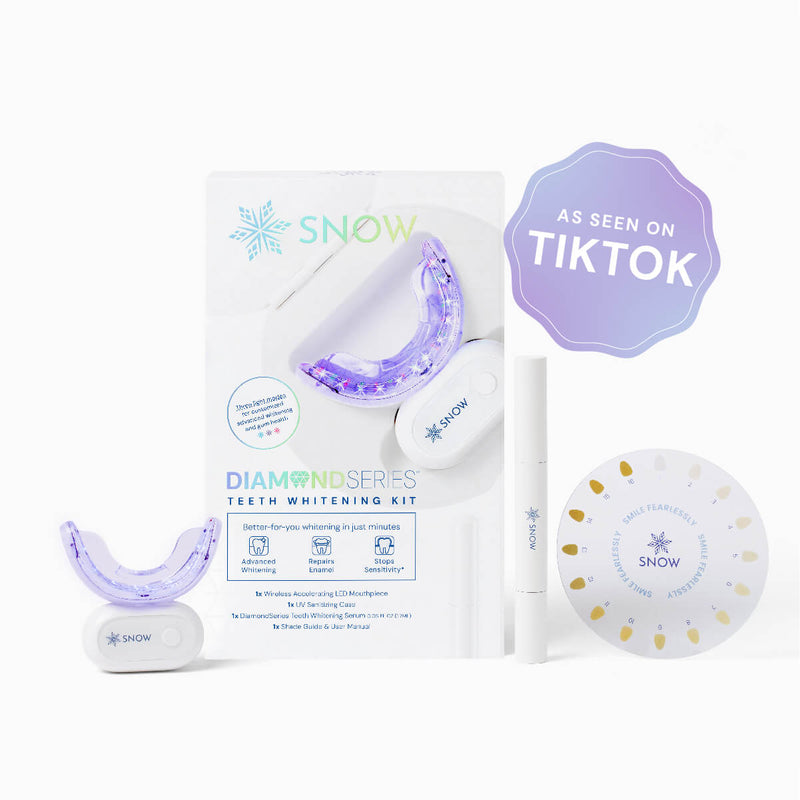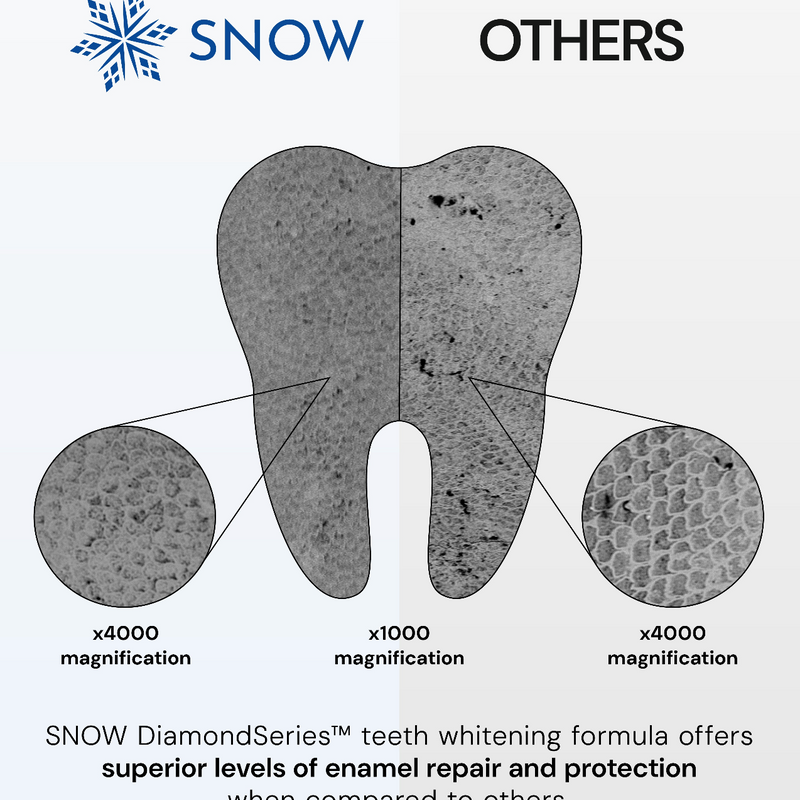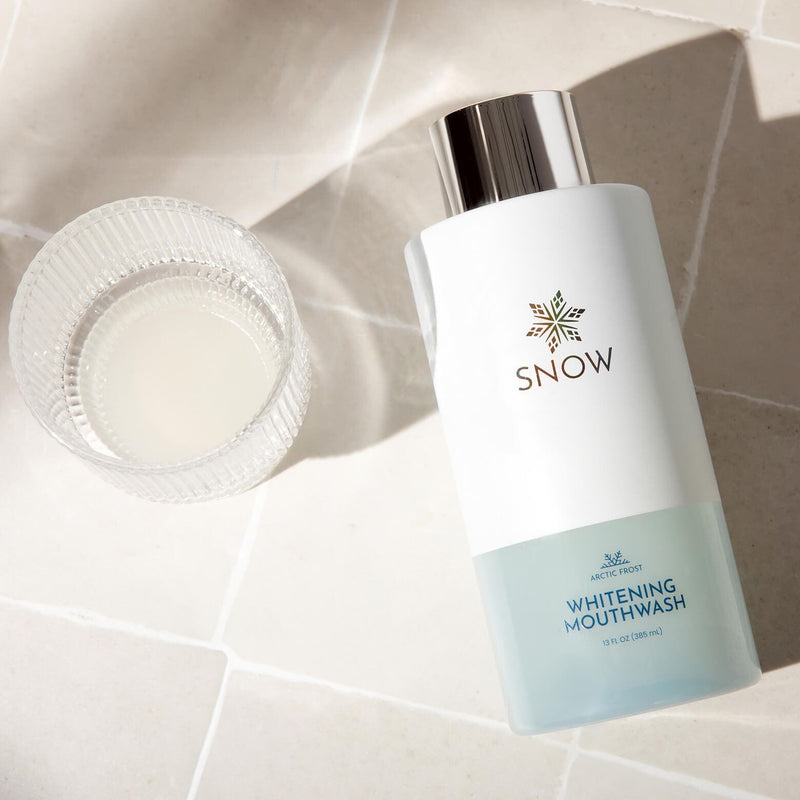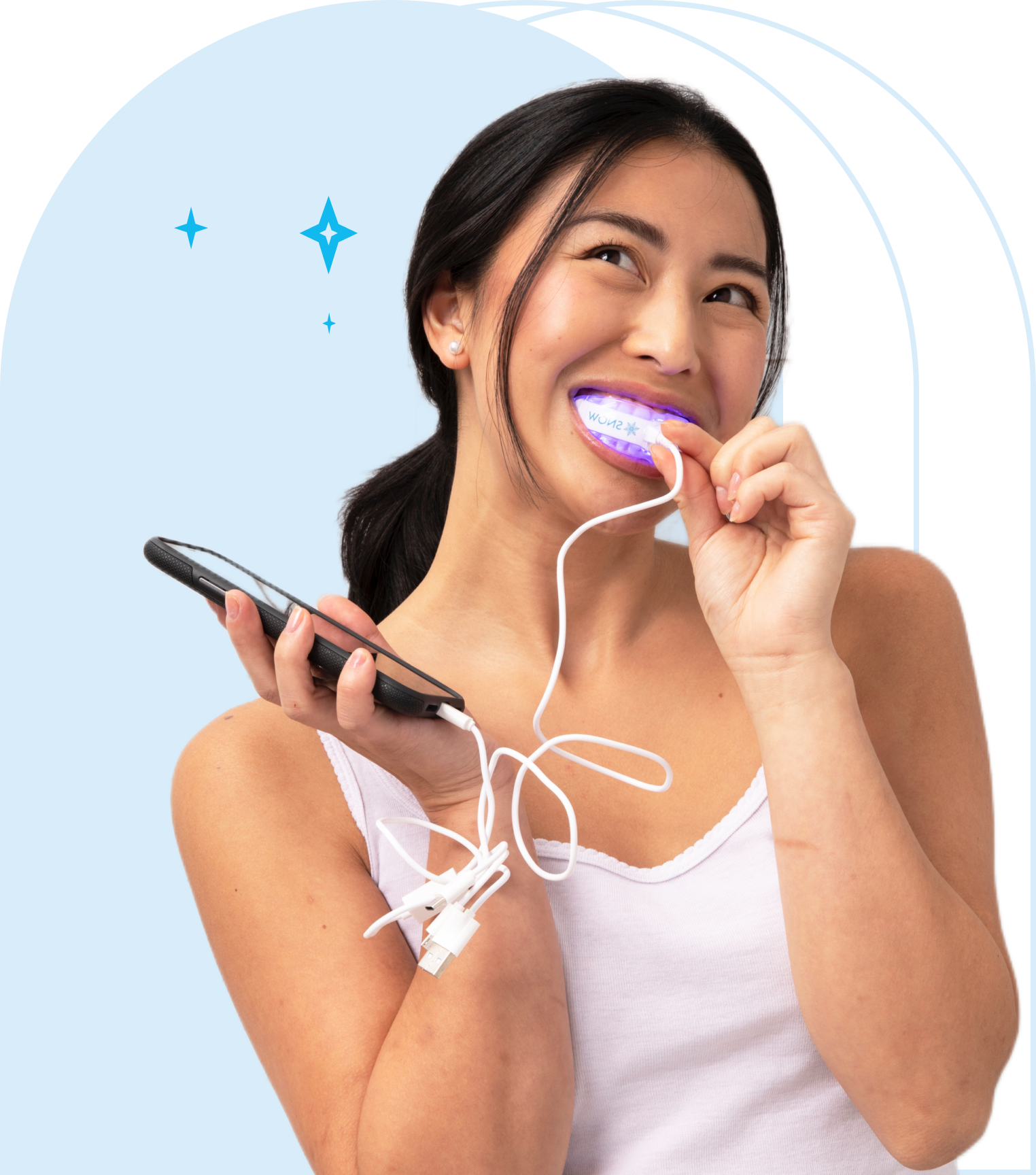For years, orthodontics has been one of the most in-demand dental industries. Many people desire straighter teeth, and braces remain a top choice to correct misalignments. However, sometimes braces alone aren't enough to fix more severe issues, such as a misaligned jaw or a problematic bite. In these cases, an orthodontist may recommend special dental appliances known as orthodontic headgear.
You may believe that using headgear is an outdated dental practice, but it is still a widely used orthodontic treatment that works wonders to correct severe tooth and jaw misalignments. If your orthodontist suggests headgear, it's essential to understand what kind you'll be wearing and some dos and don'ts to follow while wearing it.
In this article, we'll look at the major types of orthodontic headgear, why they may be necessary, and how to maintain them to get the most out of your treatment and achieve a smile that will last a lifetime.
What is orthodontic headgear?
Orthodontic headgear, sometimes called extra oral appliances, are devices used to correct severe tooth misalignments and support proper lower and upper jaw growth.
As the name suggests, they're worn on the head, usually for several hours each day or at night. Although uncomfortable initially, orthodontic headgear is highly effective at correcting alignment issues.
How does headgear move the upper jaw forward?
Dental appliances have come a long way since the early days of orthodontics. Still, regardless of the purpose, orthodontic headgear works essentially the same way it always has – by using hooks, cools, and rubber bands to exert a measured force, slowly moving the upper jaw forward into the correct position.
This force is much more than braces can generate alone, which is why headgear is most often used in conjunction with them to achieve optimal results.
Best candidates for headgear appliances
Headgear treatment is typically only recommended for children and adolescents whose jaw bones are still growing and more susceptible to treatment. However, adults may also wear headgear to help correct the position of teeth that shifted after others were extracted.
Reasons why orthodontic headgear may be necessary
Orthodontists rarely prescribe headgear unless a patient has a form of malocclusion that cannot be corrected with braces alone. Headgear was designed to generate more powerful movement of the teeth and jaws.
Most frequently today, headgear is used to correct misalignments between the upper and lower jaws. For example, headgear may be the most suitable treatment option if you have an overjet, underbite, or crossbite.
As previously mentioned, headgear is also most effective for children, because a child's jaw is still rapidly growing. During this stage of life, the dental appliance can hold back improper growth of the jawbone, forcing it into proper alignment and halting dangerous jaw abnormalities early on. Most importantly, headgear can help prevent the need for invasive jaw surgery later in life.
Why is orthodontic headgear important?
Many children and teens may wince at the idea of wearing orthodontic headgear, but if an orthodontist deems it necessary, parents should do all they can to ensure their child complies. One helpful tip is to explain to them the benefits of wearing their headgear consistently and the consequences of not following their treatment plan.
Severe jaw misalignments are far from a cosmetic issue. Left untreated, misaligned teeth and jaws can increase a person's risk of developing other serious health issues, including temporomandibular joint disorder (TMJ) and sleep apnea.
Additionally, orthodontic headgear can help prevent speech problems, breathing issues, and difficulties eating and chewing.
Basic components of orthodontic headgear
You may have an idea of the traditional, bulky headgear from the 1980s. Luckily, modern orthodontic appliances are less cringe-worthy than their predecessors. The major components of today's orthodontic headgear include the following.
Head cap
As the name implies, a head cap is the part of the headgear that sits on the head and serves as the anchor for the rest of the apparatus. It provides a point of attachment for the chin strap and also helps secure the vertical frame of the facebow to the head safely and comfortably.
Fitting straps
Fitting straps are an integral part of headgear, and there are various types depending on the headgear you need. For example, some headgear require several straps that wrap around the back of the head, while others utilize just one fitting strap that attaches to the head cap and extends down behind the neck. Their purpose is to help keep the dental appliance in place and prevent it from slipping during wear.
Facebow
The facebow is a U-shaped metal appliance that attaches with elastic bands or tubes to the molars, head cap, and straps to help move the upper and lower teeth into their proper positions.
Rubber bands, tubes, and hooks
The rubber bands, tubes, and hooks are small accessory components used to anchor the various parts of the headgear to the molars and other teeth. These parts also vary depending on the type of headgear recommended.
Chin cup, forehead pad, and mouth yoke
Chin cups and forehead pads are components typically only used for patients with an underbite. The chin cup is attached to a forehead pad with wires, anchoring it to the headgear. The frame of these wires houses a horizontal mouth yoke, which generates the required pressure on the teeth and makes space in the mouth.
Braces
In most cases, headgear attaches to braces on the teeth via hooks or elastic bands, which help to optimize the alignment process. Braces may be worn on the upper teeth, lower teeth, or both. However, not all patients will require braces along with their headgear.
Major types of orthodontic headgear
Every patient is different, and they should be treated as such. Consequently, many types of orthodontic headgear are on the market, each designed to treat a specific alignment issue.
Your orthodontist will select the right dental appliance to suit your unique needs. However, three main types of headgear are used to correct the most common tooth and jaw misalignments – cervical pull, high pull, and reverse pull headgear.
Cervical Pull Headgear
The most common type of headgear is the cervical pull type. It's composed of a U-shaped metal wire (facebow) that attaches to the bands of braces worn on the back teeth and a single strap worn behind the neck. Then, as the wire is tightened, it pulls the teeth into proper alignment.
A cervical headgear appliance is primarily used to treat overbites and overjets. An overbite is a malocclusion that results in the top teeth jetting out much further than the bottom teeth. Similarly, an overjet refers to a severe protrusion of the upper front teeth or upper jaw, commonly known as "buck teeth." Unfortunately, neither of these conditions can be treated with braces alone.
Cervical headgear is very effective. However, treatment often takes place over several months and requires patients to wear the dental appliance for at least 12-14 hours per day.
High Pull Headgear
Another kind of headgear is the high pull type, which is similar to cervical headgear in that it also uses a U-shaped wire. However, high pull headgear has a strap that goes over and behind the head instead of the neck.
High pull headgear is generally used to treat an open bite and helps direct the growth of the upper jaw into a more appropriate position. An open bite is a condition that causes the lower and upper teeth to slant outwards and not touch when the mouth is closed.
Like cervical pull headgear, the high pull variety may also be used to correct an excessive horizontal overbite or overjet by holding back excessive jaw growth. High pull headgear should also be worn 12-14 hours daily for several months to achieve meaningful results.
Reverse Pull Headgear (Headgear for underbite)
The final type of orthodontic headgear is the reverse pull or "facemask" variety. Reverse pull headgear is notably beneficial as it is often prescribed for young children to reduce or even eliminate the need for extensive jaw surgery later in life.
It has a wire frame that runs down the length of the face from a forehead pad into a chin cup. In addition, the frame contains a horizontal mouth yoke with hooks that attach to braces. This system generates the force necessary to promote proper growth of the upper jaw. Consequently, reverse pull headgear shifts the lower jaw into a more suitable position.
Typically, patients with an underbite or crossbite, neither of which can be treated with braces alone, require reverse pull headgear. An underbite is characterized by a lower jaw that protrudes in front of the upper jaw. In contrast, a crossbite occurs when the upper and lower jaws do not align properly when a person bites down.
For best results, reverse pull headgear is generally worn 10-14 hours daily for several months. However, it may be necessary to wear the device up to 14-16 hours per day.
What to expect when wearing headgear
Like many other dental treatments, there are challenges involved with orthodontic headgear. For example, children and teens balk at wearing their headgear to school. Consequently, most orthodontists recommend that patients put on their headgear as soon as school is over and wear them throughout the night to ensure they're meeting the required wear time.
Additionally, it's common to feel some soreness during the first few days of wearing headgear. However, this is normal, and the pain is typically temporary. If necessary, taking an over-the-counter pain reliever, such as Ibuprofen, or utilizing a common home remedy for pain relief is often sufficient to reduce any discomfort.
Most importantly, it is essential to wear your headgear for the prescribed time per day every day – no exceptions. Missing even one night of wearing headgear can be detrimental to your treatment progress, potentially wiping out everything you accomplished over the past several days of wear. If you accidentally skip a day, it is crucial to make the time up to prevent delay in treatment.
How to clean and maintain your headgear
Properly functioning headgear is highly dependent on how a patient cleans and takes care of it. For this reason, it's vital to follow your orthodontist's instructions for cleaning and maintaining your orthodontic appliance.
Depending on which type of headgear you have, your dentist may give you specific instructions for care. However, the following basic guidelines generally apply:
- Always make sure to slowly and gently remove your headgear by detaching the elastic strap first to put less stress on the device and protect your eyes.
- Brush your teeth at least twice daily along with your braces, paying close attention to removing any food or plaque around the bands and hooks.
- Floss regularly, but be careful to avoid causing damage to your braces or loosening the bands.
- Wash the hard, metal parts of your headgear daily with antibacterial soap and warm water, then rinse thoroughly.
- Wash the soft pads and straps of your headgear every few days with mild detergent or soap and warm water, then dry thoroughly before wearing.
Tips for sleeping with headgear
It can be challenging to start wearing a dental appliance to bed each night, especially if you're prescribed reverse pull headgear. However, most patients get used to their headgear within a week or so. There are also a few tips you can utilize to ease the transition.
First, adjust the straps and headpiece of your headgear to ensure it's comfortable before you lay down to sleep. Next, find a cozy pillow that complements the shape of your headgear, especially if you're wearing the cervical pull or high pull type.
Finally, it's best to sleep on your back to reduce pressure on your jaws and avoid any unexpected pain or strain throughout the night.
Summary
Severe malocclusions and jaw misalignments are serious issues that, if left untreated, can increase the risk of other health issues, including sleep apnea and temporomandibular joint disorder (TMJ). In these cases, orthodontic headgear is often the best treatment option. However, it is far from a simple fix.
Wearing headgear requires dedication and a significant time commitment – usually 10-12 hours of daily wear for one to two years – to ensure the upper and lower teeth and jaws grow into a more suitable position.
Because the treatment is most often recommended for children, it may be helpful for parents to explain that by wearing their headgear consistently, they may be able to avoid invasive jaw surgery later in life and ultimately achieve the beautiful smile they've always dreamed of.
FAQs
When is orthodontic headgear necessary?
Orthodontic headgear is typically used to correct severe tooth and jaw misalignment issues, especially those that can't be treated with traditional metal braces alone. Examples include patients with an overbite, overjet, buck teeth, or crossbite.
Does headgear hurt to wear?
It's normal to experience mild pain or soreness at the beginning of treatment with orthodontic headgear. However, any discomfort should subside within a few days. In the meantime, over-the-counter pain medications, such as Advil, can help relieve mild to moderate pain from braces and headgear.
Can adults wear headgear?
Typically, adults are not good candidates for headgear because their teeth and jaws are already fully developed. However, if an adult loses their teeth in an accident or needs a minor bite adjustment, they may be required to wear headgear as part of their treatment plan.
How long does headgear take to work?
Most patients can expect to wear their headgear at least 10-12 hours per day for one to two years before completing treatment.
How much does headgear treatment cost?
Like other orthodontic appliances, the cost of headgear varies tremendously depending on the severity of the misalignment. However, the average cost is anywhere from $1,000 - $9,000.


























